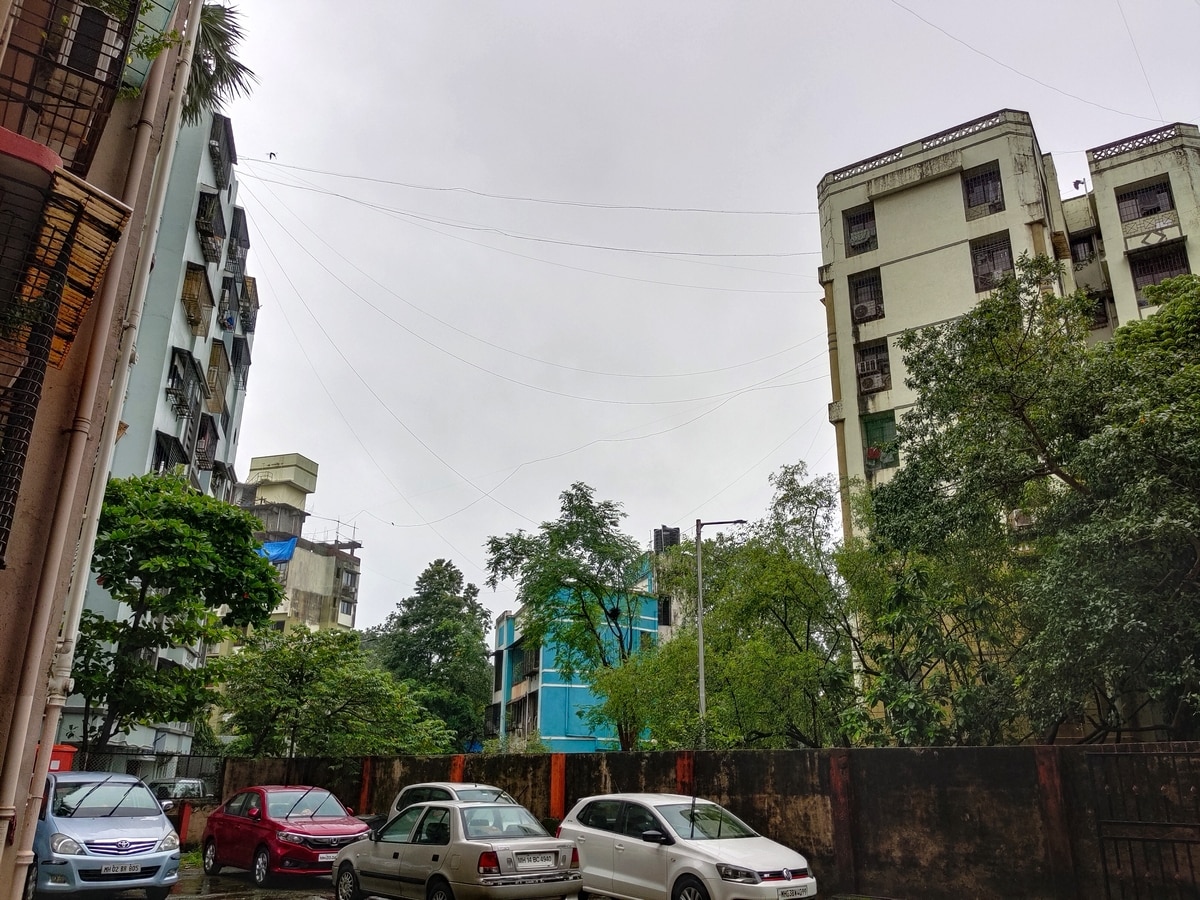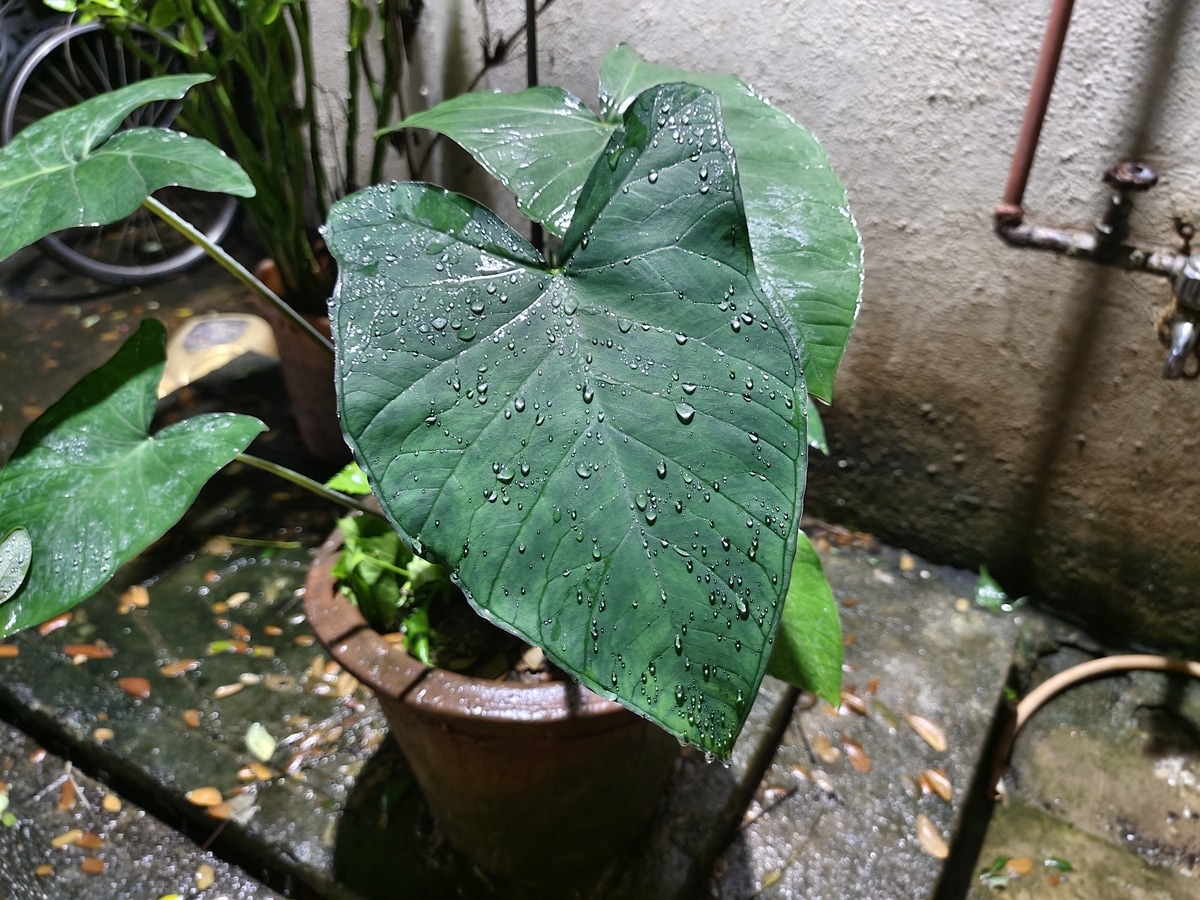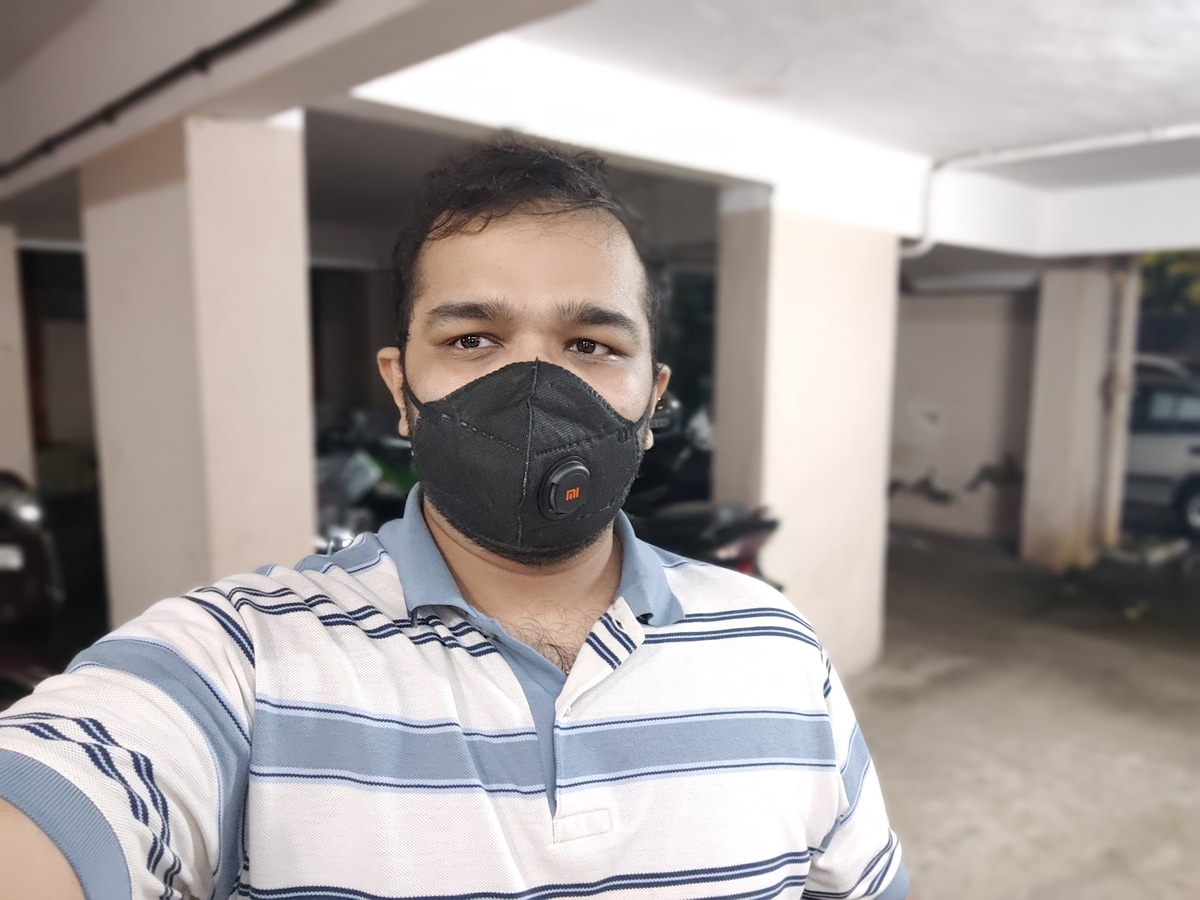
The Vivo X50 Pro is the first addition to the company's X-series in a very long time. The last phone to be added to the X series was the Vivo X21, which I reviewed way back in 2018. The new Vivo X50 Pro features a gimbal camera system, which is the first of its kind in a smartphone, and is meant to help stabilise video and still shots by compensating for the movement of your hands. I put the Vivo X50 Pro to the test to find out if it's worth your money
Vivo X50 Pro design: Premium looking
The Vivo X50 Pro is very well designed. It looks premium and feels sturdy in the hand. Vivo has opted for a curved display with thin bezels all around, which give it the impression of having an edge-to-edge display. At first glance, you could mistake it for a Samsung device, as it has a curved display similar to many premium Samsung smartphones, but the similarities end there.
Vivo has gone with a thin, metallic frame for the X50 Pro, which is sandwiched between the curved display and the curved rear glass panel. This phone looks sleek and gets cold to the touch in an air-conditioned room. Vivo has used Schott's Xensation Up glass on the front and back for scratch protection. I like the thin frame and the positioning of the power and volume buttons, which are easy to reach.
While the sides of the frame are curved to help the phone sit well in the hand, the top and the bottom of the Vivo X50 Pro are surprisingly flat. It has a USB Type-C port, SIM tray, primary microphone, and speaker at the bottom. The primary microphone is too close to the SIM tray, so it could be mistaken for the ejector mechanism. On the top, there's a secondary microphone along with inscriptions that say “5G” and “Professional Photography”.

The Vivo X50 Pro has a hole-punch display
The Vivo X50 Pro is available in a single colour called Alpha Grey. You will notice a slight shift in colour when light bounces off the back panel. It has a matte, frosted finish which helps hide fingerprints and smudges quite well. The rear camera module will definitely grab eyeballs, as the primary camera lens is one of the biggest I have ever seen on a smartphone in recent times. The entire camera module protrudes slightly, so I would recommend that you use the case provided in the box.
The Vivo X50 Pro does not have a 3.5mm headphone socket, but comes with a pair of regular headphones and a USB Type-C to 3.5mm dongle in the box. It also comes with a 22W Flash Charge 2.0 charger.
Vivo X50 Pro specifications: Future ready
One of the first things that caught my attention on the spec sheet of the Vivo X50 Pro was the Qualcomm Snapdragon 765G SoC. The Vivo X50 Pro was the first smartphone to launch in India with this processor, which we later saw in the lower priced OnePlus Nord (Review). It is a 5G-ready SoC which delivers very good performance, if the Nord is any indication. There is only one configuration of the Vivo X50 Pro in India, which has 8GB of RAM and 256GB of storage. You don't have the option to expand storage but 256GB should be enough for anyone. Vivo has used the UFS 2.1 flash storage format, which is slower than the UFS 3.0 storage found in the OnePlus 8 (Review) and Xiaomi Mi 10 5G (Review).
The Vivo X50 Pro sports a 6.56-inch AMOLED display with a 90Hz refresh rate and 180Hz touch sampling rate. It is also HDR10+ certified. The display gets bright enough outdoors and has good viewing angles. You do have the option to tweak the colour output of the display too.

The Vivo X50 Pro runs Funtouch OS 10.5 on top of Android 10
There is support for Bluetooth 5.1, dual-band Wi-Fi, three satellite navigation systems, 5G, and dual 4G VoLTE. This phone lacks an IPrating for dust and water resistance, and wireless charging; features that I expect from a smartphone priced at around Rs. 50,000 today.
In terms of software, the Vivo X50 Pro runs Funtouch OS 10.5 on top of Android 10, and my unit initially had the May 2020 Android security patch, but I received a software update during the review period with the July patch. I found a number of preinstalled apps on the smartphone such as Facebook, PhonePe, Amazon, VivoCloud, and V-Appstore, which is an alternative to the Google Play store. There's a GameCenter app which offers a curated list of games to download. There is also an ‘Ultra Game Mode' which clears memory when you launch a game, and lets you mute incoming notifications and calls while gaming.
Vivo X50 Pro performance: 5G ready
The Vivo X50 Pro offered very good performance and I never noticed any lag or stutter while using it. The UI felt smooth, especially when I enabled the 90Hz refresh rate for the display. I did not have to wait for long to load heavy apps, and I was able to multitask between different apps very easily. The fingerprint scanner was quick to unlock the smartphone, and face recognition never required more than one attempt to work . The display produced crisp details and I enjoyed watching videos on the Vivo X50 Pro. The bottom-firing speaker got quite loud but stereo output was missed.
The phone also posted some impressive numbers in benchmarks. In AnTuTu 8, it managed 2,63,410 points. It also scored 624 and 1899 points in Geekbench's single-core and multi-core tests respectively. It isn't the most powerful smartphone in this price range; the OnePlus 8 packs in a more powerful Qualcomm Snapdragon 865 SoC, which managed 5,78,289 in AnTuTu 8 and 912 and 3362 points in Geekbench. As for the GFXBench graphics benchmark , the Vivo X50 Pro managed 18fps and 32fps in the Car Chase and Manhattan 3.1 tests ,respectively.

The buttons on the Vivo X50 Pro offer good feedback
I played PUBG Mobile on the Vivo X50 Pro, and it defaulted to the ‘High' quality preset, with graphics set to ‘HD' and the frame rate set to ‘High'. The phone could handle the game at these settings without any issues and I did not notice any stutter while playing. It did not get too hot and even after a 20 minute match, the phone only registered a three percent battery drop.
Battery life on the Vivo X50 Pro was very good, and it lasted beyond a day, without needing to be charged. I did notice that using the gimbal camera system drained the battery slightly faster. In our HD video loop test, the Vivo X50 Pro lasted for 15 hours and 40 minutes, which is fairly good. The supplied 22W Flash Charge 2.0 charger is quick to charge the device, getting it to 50 percent in 30 minutes and 91 percent in an hour.
Vivo X50 Pro cameras: Revolutionary or just a gimmick?
The Vivo X50 Pro has a quad-camera setup at the back like most smartphones these days, but the highlight feature is the gimbal stabilisation system for the 48-megapixel primary camera, which can reduce shakes while shooting photos and video. The sensor is also physically bigger than most other sensors used in phones in recent times. This gimbal system allows the camera sensor to move and rotate slightly, compensating for accidental shakes.

The primary camera sports a gimbal stabilisation system.
The other cameras are a 13-megapixel sensor for portraits, an 8-megapixel ultra-wide-angle camera, and an 8-megapixel telephoto camera. The camera app has lots of features and you get multiple shooting modes to choose from. The gimbal camera system can be toggled on or off from the camera settings, and when it is enabled the viewfinder gives you an overlay of a small circle with a white ball in it. Vivo says that as long as the tiny ball is in the circle, the Vivo X50 Pro should deliver a well-stabilised shot. On the front of the phone, you get a 32-megapixel selfie camera.
The artificial intelligence (AI) on the Vivo X50 Pro is quick to recognise a scene and set the camera up accordingly. It also offers recommendations for which sensor to use, based on the scene.
Vivo X50 Pro daylight camera sample (tap to see full-size image)
Vivo X50 Pro wide-angle camera sample (tap to see full-size image)
In daylight, the Vivo X50 Pro managed good shots with a decent amount of detail. The ultra-wide-angle camera offered a wider field of view but there was a notable loss in detail compared to shots taken with the primary sensor.
Vivo X50 Pro close-up camera sample (tap to see full-size image)
Close-ups turned out quite well. If you have trouble keeping your hands steady while shooting, there is no reason to worry with the Vivo X50 Pro as the gimbal system compensates very well, resulting in a crisp shot nearly every time. However, the AI tends to boost colours slightly, which I wasn't too happy with.
Vivo X50 Pro portrait camera sample (tap to see full-size image)
Portrait mode on the Vivo X50 Pro uses the dedicated 13-megapixel portrait camera, which even offers a 2x zoomed-in view of your subject. The smartphone lets you set the level of blur, beautification, and style effects before taking a shot. The output had good edge detection and the Vivo X50 Pro could distinguish between the subject and the background very well.
Vivo X50 Pro macro sample (tap to see full-size image)
For macro shots, the Vivo X50 Pro uses the wide-angle camera. The phone takes good macro shots, and the higher resolution of the ultra-wide-angle sensor allows you to magnify and crop shots if required.
Vivo X50 Pro telephoto camera samples (tap to see larger image)
The telephoto camera offers 5x optical zoom and up to 60x digital zoom. At 5x, photos have good detail, but at higher magnification levels, there is a slight dip in the level of detail but not very much grain. Large text at a distance was still legible even at higher magnification levels.
Vivo X50 Pro low-light camera sample (tap to see full-size image)
Vivo X50 Pro Night mode camera sample (tap to see full-size image)
Vivo X50 Pro Night mode close-up sample (tap to see full-size image)
Photos taken in low light had good details, and the phone managed to keep noise and grain to a minimum. Enabling Night mode enhanced the overall brightness of shots with better details in the shadows. The gimbal system helped keep the camera stable while the phone took multiple long exposure shots in Night mode. There are multiple photo effects available too.
Vivo X50 Pro low-light portrait selfie sample (tap to see full-size image)
Selfies taken with the 32-megapixel front camera turned out well during the day with good details. The camera app does give you the option to simulate a depth effect, like you get with Portrait mode, but you cannot set the level of blur. Low-light shots had good detail, even after cropping.
Video recording tops out at 4K 60fps for the primary camera while the selfie camera is limited to 1080p. The gimbal camera system helps stabilise video very well resulting in steady-looking footage at 1080p as well as 4K. It also managed to stabilise footage while I was pacing up and down, which was impressive. There are multiple features for video such as surround audio recording which lets you select between the front-facing, rear-facing and surround audio effects, while recording. Video shot in low-light is also stabilised at 1080p as well as 4K. Videos shot in low-light had good details and very low noise, and has occasional shimmer effects when changing directions while walking.
Verdict
The Vivo X50 Pro is the first smartphone to feature built-in gimbal stabilisation. While this is a first-gen product, it does the job quite well. Video stabilisation was quite good and the gimbal system does make it super easy to take shots with Night mode. Hopefully, this feature will become more common in the future.
If you shoot a lot of videos on your smartphone and don't want to spend on a hand-held gimbal, the Vivo X50 Pro should appeal to you. Its camera and video performance are definitely highlights. However, this phone isn't an all-rounder and falls a bit short in a few key areas. The OnePlus 8 offers much better app and gaming performance at a lower price. Similarly, the Xiaomi Mi 10 5G and the OnePlus 8 Pro could be powerful alternatives to the Vivo X50 Pro.
If you don't care about having a flagship-level SoC but would much rather have the best stabilisation system in your phone, then there's nothing that comes close to the Vivo X50 Pro, at least not yet.
,


















0 on: "Vivo X50 Pro price in nepal and india the gimbal camera stabilisation is the party-piece for the Vivo X50 Pro"